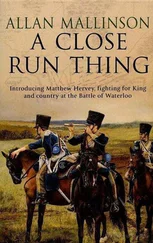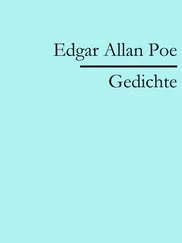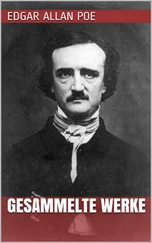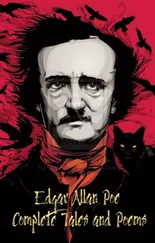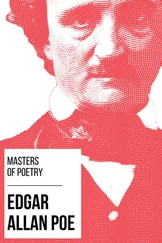Allan Mallinson - Nizams Daughters
Здесь есть возможность читать онлайн «Allan Mallinson - Nizams Daughters» весь текст электронной книги совершенно бесплатно (целиком полную версию без сокращений). В некоторых случаях можно слушать аудио, скачать через торрент в формате fb2 и присутствует краткое содержание. Год выпуска: 2000, ISBN: 2000, Издательство: Bantam, Жанр: Исторические приключения, на английском языке. Описание произведения, (предисловие) а так же отзывы посетителей доступны на портале библиотеки ЛибКат.
- Название:Nizams Daughters
- Автор:
- Издательство:Bantam
- Жанр:
- Год:2000
- ISBN:9780553507140
- Рейтинг книги:5 / 5. Голосов: 1
-
Избранное:Добавить в избранное
- Отзывы:
-
Ваша оценка:
- 100
- 1
- 2
- 3
- 4
- 5
Nizams Daughters: краткое содержание, описание и аннотация
Предлагаем к чтению аннотацию, описание, краткое содержание или предисловие (зависит от того, что написал сам автор книги «Nizams Daughters»). Если вы не нашли необходимую информацию о книге — напишите в комментариях, мы постараемся отыскать её.
Nizams Daughters — читать онлайн бесплатно полную книгу (весь текст) целиком
Ниже представлен текст книги, разбитый по страницам. Система сохранения места последней прочитанной страницы, позволяет с удобством читать онлайн бесплатно книгу «Nizams Daughters», без необходимости каждый раз заново искать на чём Вы остановились. Поставьте закладку, и сможете в любой момент перейти на страницу, на которой закончили чтение.
Интервал:
Закладка:
‘Your Highness, I happen to know that his Urdu is faultless!’
‘Urdu? Yes, though I had rather wished we might discourse in English — read poetry, scripture and the like — as you and I have, Captain Hervey.’
The Englishman bowed, acknowledging the compliment.
‘Well, I take my leave of you for the time being,’ said the rajah. ‘Do you have further business today, or may we have the pleasure of your company once more this evening?’
‘I shall do my utmost to be there, Your Highness, but first I must seek Captain Peto. He, too, has letters of recall, but he cannot wait and we must make our arrangements directly.’
The rajah nodded; he understood. ‘ “And the gilded car of day, His glowing axle doth allay, In the steep Atlantic stream.” ’
‘You quote one of my favourite works, sir.’
‘Yes, I know it — the masque at Ludlow Castle. Near Shrewsbury, is it not?’
Hervey smiled even wider: truly this rajah was a man of uncommon learning and sensibility. ‘I hope, one day, you will visit England, sir. It cannot compare with Italy in the magnificence of its past beauty, but I believe you would be excessively diverted.’
‘Thank you, Captain Hervey. Let us pray that it may come about. Now to one last matter — the raj kumari. It is, perhaps, not possible for you to judge anything but the gravest ill of her. What she did, however, was for no baser reason than out of love for me and for Chintal. In time she will return to the palace, but not yet, not yet.’
Hervey shifted awkwardly. There was immense sadness in the rajah’s voice.
‘You know all, I suppose?’
‘I cannot tell, sir,’ he replied, for how much there was in this most convoluted of stories he could not hazard.
‘This land is made of spies, Captain Hervey. It was perhaps destined that one day the secret I have borne for many years — my Christian baptism in the place that St Peter himself was most cruelly put to death — should be discovered, and traded for the highest price. Kunal Verma learned of it, skulking in shadows, and, like Judas, traded his secret for silver — two and more lakhs of it. The raj kumari and some loyal but misguided courtiers connived at his extortion — the batta fraud — but when silver was no longer to be had, and he threatened to travel to Haidarabad, my daughter ordered him killed.’
‘And Captain Steuben, sir?’
‘An entirely innocent victim, I fear.’
Hervey sighed. One day he might reconcile the raj kumari’s actions with the necessities of war, but for now that prospect looked distant. ‘Must you still hold your secret, Your Highness?’ he asked, his voice hushed.
‘For the moment,’ replied the rajah. ‘Perhaps for ever. There is room within the Hindoo religion. You cannot understand, for I believe truly that it must come with birth alone.’
‘I hope you will visit with us in England, sir,’ said Hervey once more.
The rajah smiled again.
Hervey hoped fervently that the raj kumari might somehow appear, her exile more figurative than real. Too much had passed between them for there to be no leave-taking, for their association to be just fractured in this way. But she did not come. Deep in the forest of the Gonds, with but a few attendants, she listened all day to the sadhu and served out her penance. The rajah did not know whether he himself would ever see her again, for her restoration was given entirely into the hands of the holy men.
Captain Laughton Peto was pacing the terrace of the water garden as he would his own quarterdeck. Hervey almost saluted as he came up the steps.
‘Well, sir,’ he huffed, ‘I hear those despatches included your letter of recall.’
‘Yes, the duke is not after all to come to India. He’s to be appointed to the cabinet.’
‘Deuced lucky for you in the circumstances, I should say — eh, Hervey?’
‘Yes, I should say it was.’ He tried to keep his reply free of the relief he had felt on first receiving the order.
‘Am I to suppose, therefore, that you now seek passage to England?’
‘If that is in order, sir,’ replied Hervey, maintaining all due ceremony.
‘And, of course, for your groom?’
‘I would be obliged.’
There followed a purposeful silence, but Hervey saw no obligation to hasten its end.
Peto could no longer contain himself. ‘And I suppose you wish a berth for your horse!’
‘I am ever in your debt, sir.’
‘Great heavens, Captain Hervey, my ship is become nothing more than a packet! But I suppose I should count myself lucky the rajah has not presented you with a deuced elephant!’
Hervey smiled sheepishly.
‘ What! ’ exploded Peto.
‘Not an elephant but a Kehilan. Let me explain…’
THE END
THE DUKE OF WELLINGTON’S CAVALRY
AN EXPLANATORY NOTE
Here is a picture — a very incomplete one — of the cavalry in the Duke of Wellington’s day. The picture remained the same, with but minor changes, until after the Crimean War nearly half a century later.
Like the infantry, the cavalry was organized in regiments. Each had a colonel as titular head, usually a very senior officer (in the case of the 10th Light Dragoons, for instance, it was the Prince of Wales; in the case of the fictional 6th Light Dragoons it was first the Earl of Sussex and then Lord George Irvine, both lieutenant generals) who kept a fatherly if distant eye on things, in particular the appointment of officers. The actual command of the regiment was exercised by a lieutenant-colonel. He had a major as his second in command (or ‘senior major’ as he was known in the Sixth and other regiments), an adjutant who was usually commissioned from the ranks, a regimental serjeant-major (RSM) and various other ‘specialist’ staff.
A cavalry regiment comprised a number of troops identified by a letter (A Troop, B Troop, etc.), each of a hundred or so men commanded by a captain, though in practice the troops were usually under strength. The number of troops in a regiment varied depending on where it was stationed; in Spain, for instance, at the height of the war, there were eight.
The captain was assisted by two or three subaltern officers — lieutenants and cornets (second-lieutenants) — and a troop serjeant-major, who before 1811 was known as a quartermaster (QM). After 1811 a regimental quartermaster was established to supervise supply and quartering (accommodation) for the regiment as a whole — men and horses. There was also a riding-master (RM), like the QM usually commissioned from the ranks (‘the ranks’ referred to everyone who was not a commissioned officer, in other words RSM and below). With his staff of rough-riders (a rough was an unbroken remount, a replacement horse) the RM was responsible for training recruits both human and equine.
Troops were sometimes paired in squadrons, numbered First, Second, Third (and occasionally Fourth). On grand reviews in the eighteenth century the colonel would command the first squadron, the lieutenant-colonel the second, and the major the third, each squadron bearing an identifying guidon , a silk banner — similar to the infantry battalion’s colours . By the time of the Peninsular War, however, guidons were no longer carried mounted in the field, and the squadron was commanded by the senior of the two troop leaders (captains).
A troop or squadron leader, as well indeed as the commanding officer, would give his orders in the field by voice and through his trumpeter. His words of command were either carried along the line by the sheer power of his voice, or were repeated by the troop officers, or in the case of the commanding officer were relayed by the adjutant (‘gallopers’ and aides-de-camp performed the same function for general officers). The trumpet was often used for repeating an order and to recall or signal scattered troops. The commanding officer and each captain had his own trumpeter, who was traditionally mounted on a grey, and they were trained by the trumpet-major (who, incidentally, was traditionally responsible for administering floggings).
Читать дальшеИнтервал:
Закладка:
Похожие книги на «Nizams Daughters»
Представляем Вашему вниманию похожие книги на «Nizams Daughters» списком для выбора. Мы отобрали схожую по названию и смыслу литературу в надежде предоставить читателям больше вариантов отыскать новые, интересные, ещё непрочитанные произведения.
Обсуждение, отзывы о книге «Nizams Daughters» и просто собственные мнения читателей. Оставьте ваши комментарии, напишите, что Вы думаете о произведении, его смысле или главных героях. Укажите что конкретно понравилось, а что нет, и почему Вы так считаете.



